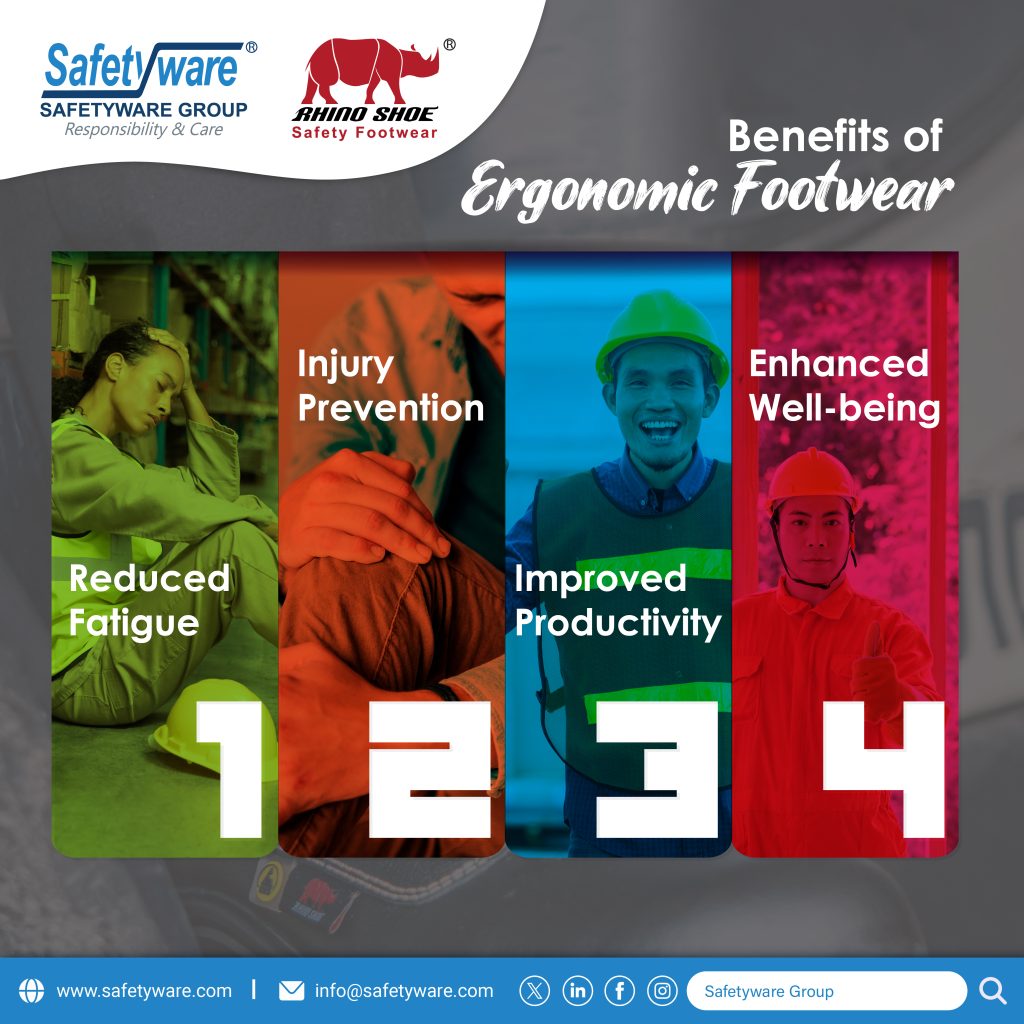Footwear plays a crucial role in ensuring comfort, safety, and overall well-being, especially in industries where workers are on their feet for extended periods. RHINO SHOE, a brand under Safetyware Group, is known for its ergonomic design and focus on comfort. Let’s delve into the comfort science behind RHINO SHOE and the importance of ergonomics in footwear:

1. Understanding Ergonomics in Footwear:
Ergonomics in footwear involves designing shoes that provide optimal support, comfort, and performance while reducing the risk of musculoskeletal disorders and fatigue. Factors such as cushioning, arch support, flexibility, and fit are essential in creating ergonomic footwear.
2. The Science Behind RHINO SHOE’s Comfort Design:
RHINO SHOE incorporates ergonomic principles into its design to ensure maximum comfort and functionality for workers in various industries. Here are some key features that contribute to the comfort science behind RHINO SHOE:
- Arch Support: RHINO SHOE’s designs often include arch support to help distribute weight evenly and reduce strain on the feet and lower limbs.
- Cushioning: Adequate cushioning in the insole and midsole helps absorb shock and impact, providing comfort during long hours of standing or walking.
- Breathability: Proper ventilation and moisture-wicking materials keep feet dry and comfortable, reducing the risk of blisters and discomfort.
- Wide Toe Cap: RHINO SHOE’s designs prioritize toe protection through reinforced toe caps, ensuring safety in hazardous work environments.
- Slip Resistance: Outsoles with excellent traction reduce the risk of slips and falls, enhancing safety in various work conditions.
3. Benefits of Ergonomic Footwear:
- Reduced Fatigue: Ergonomic footwear helps reduce fatigue by providing proper support and cushioning, allowing workers to stay comfortable throughout their shift.
- Injury Prevention: By promoting proper alignment and reducing pressure points, ergonomic footwear can help prevent foot, leg, and back injuries.
- Improved Productivity: Comfortable footwear can boost productivity by reducing discomfort and distractions, allowing workers to focus on their tasks.
- Enhanced Well-being: Wearing ergonomic footwear contributes to overall well-being by supporting good posture and reducing the risk of chronic pain.
4. Choosing the Right Footwear:
When selecting footwear, consider factors such as fit, support, cushioning, breathability, and safety features. Ensure that the shoes meet industry standards for safety and comfort, and provide adequate protection for the specific work environment.
In conclusion, ergonomics in footwear, as exemplified by RHINO SHOE, plays a vital role in promoting comfort, safety, and performance in the workplace. By prioritizing ergonomic design principles, workers can enjoy enhanced comfort, reduced fatigue, and improved well-being, ultimately leading to a safer and more productive work environment.
